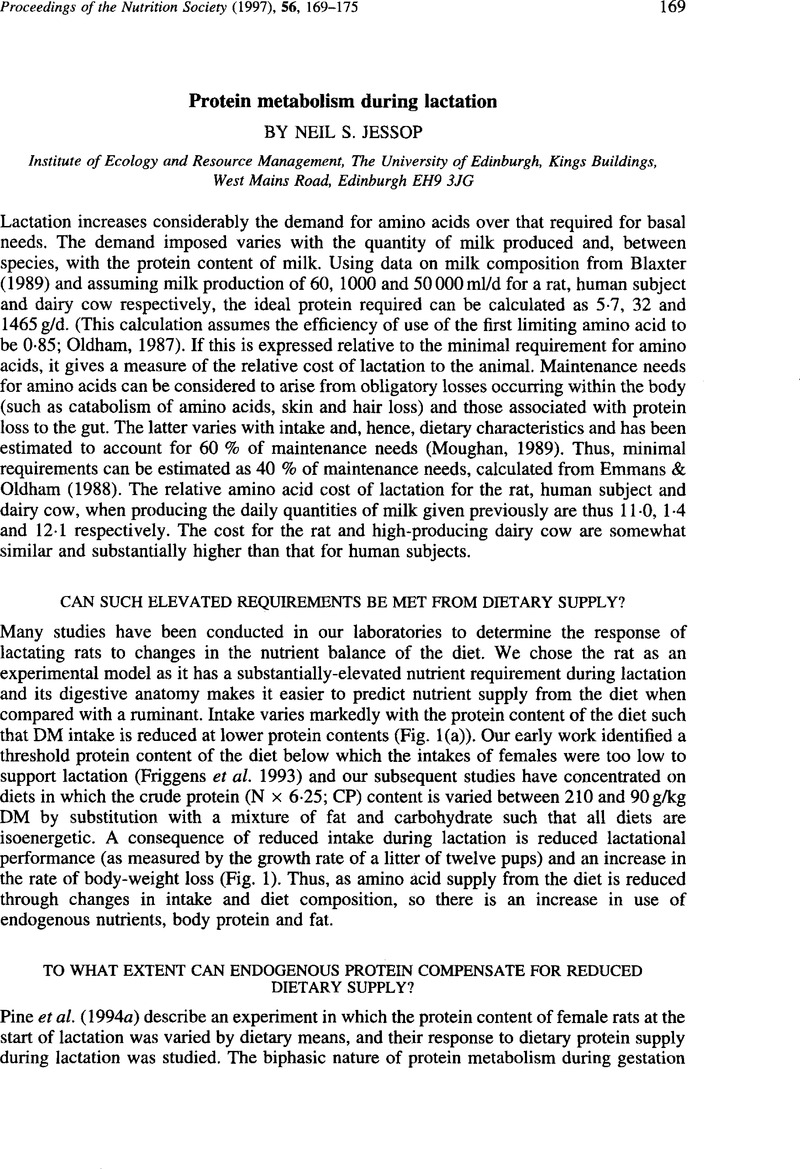Crossref Citations
This article has been cited by the following publications. This list is generated based on data provided by Crossref.
Houdijk, J.G.M
Kyriazakis, I
Jackson, F
Huntley, J.F
and
Coop, R.L
2000.
Can an increased intake of metabolizable protein affect the periparturient relaxation in immunity against Teladorsagia circumcincta in sheep?.
Veterinary Parasitology,
Vol. 91,
Issue. 1-2,
p.
43.
Coop, Robert L
and
Kyriazakis, Ilias
2001.
Influence of host nutrition on the development and consequences of nematode parasitism in ruminants.
Trends in Parasitology,
Vol. 17,
Issue. 7,
p.
325.
Houdijk, Jos G. M.
Jessop, Neil S.
and
Kyriazakis, Ilias
2001.
Nutrient partitioning between reproductive and immune functions in animals.
Proceedings of the Nutrition Society,
Vol. 60,
Issue. 4,
p.
515.
HOUDIJK, J. G. M.
KYRIAZAKIS, I.
COOP, R. L.
and
JACKSON, F.
2001.
The expression of immunity to Teladorsagia circumcincta in ewes and its relationship to protein nutrition depend on body protein reserves.
Parasitology,
Vol. 122,
Issue. 06,
Houdijk, J.G. M.
Kyriazakis, I.
Jackson, F.
and
Coop, R. L.
2001.
The relationship between protein nutrition, reproductive effort and breakdown in immunity toTeladorsagia circumcinctain periparturient ewes.
Animal Science,
Vol. 72,
Issue. 3,
p.
595.
Houdijk, Jos G. M.
Jessop, Neil S.
Knox, David P.
and
Kyriazakis, Ilias
2003.
Breakdown of immunity to Nippostrongylus brasiliensis in lactating rats.
British Journal of Nutrition,
Vol. 90,
Issue. 4,
p.
809.
Houdijk, Jos G. M.
Jessop, Neil S.
Knox, David P.
and
Kyriazakis, Ilias
2005.
Secondary infection ofNippostrongylus brasiliensisin lactating rats is sensitive to dietary protein content.
British Journal of Nutrition,
Vol. 93,
Issue. 4,
p.
493.
Maia, Luciana M.S.S.
Frazão, Marília F.
Souza, Thays K.M.
Silva, Mariana B.
Rocha-de-Melo, Ana P.
Picanço-Diniz, Cristovam W.
Amâncio-dos-Santos, Ângela
and
Guedes, Rubem C.A.
2006.
l-arginine treatment early in life influences NADPH-diaphorase neurons in visual cortex of normal and early-malnourished adult rats.
Brain Research,
Vol. 1072,
Issue. 1,
p.
19.
HOUDIJK, J. G. M.
2008.
Influence of periparturient nutritional demand on resistance to parasites in livestock.
Parasite Immunology,
Vol. 30,
Issue. 2,
p.
113.
de Lima, Denise Sandrelly Cavalcanti
de Seixas Maia, Luciana Maria Silva
de Andrade Barboza, E'lida
de Almeida Duarte, Raísa
de Souza, Laís Santos
and
Guedes, Rubem Carlos Araújo
2009.
l-Glutamine supplementation during the lactation period facilitates cortical spreading depression in well-nourished and early-malnourished rats.
Life Sciences,
Vol. 85,
Issue. 5-6,
p.
241.
Maia, L.M.S.S.
Amancio-dos-Santos, A.
Duda-de-Oliveira, D.
Angelim, M.K.C.
Germano, P.C.P.
Santos, S.F.
and
Guedes, R.C.A.
2009.
L-Arginine administration during rat brain development facilitates spreading depression propagation: evidence for a dose- and nutrition-dependent effect.
Nutritional Neuroscience,
Vol. 12,
Issue. 2,
p.
73.
Kidane, Alemayehu
Houdijk, Jos
Athanasiadou, Spiridoula
Tolkamp, Bert
and
Kyriazakis, Ilias
2010.
Nutritional sensitivity of periparturient resistance to nematode parasites in two breeds of sheep with different nutrient demands.
British Journal of Nutrition,
Vol. 104,
Issue. 10,
p.
1477.
Gould, Lisa
Power, Michael L.
Ellwanger, Nicholas
and
Rambeloarivony, Hajamanitra
2011.
Feeding behavior and nutrient intake in spiny forest‐dwelling ring‐tailed lemurs (Lemur catta) during early gestation and early to mid‐lactation periods: Compensating in a harsh environment.
American Journal of Physical Anthropology,
Vol. 145,
Issue. 3,
p.
469.
TECOT, STACEY R.
and
ROMINE, NATALIE K.
2012.
Leading Ladies: Leadership of Group Movements in a Pair‐Living, Co‐Dominant, Monomorphic Primate Across Reproductive Stages and Fruit Availability Seasons.
American Journal of Primatology,
Vol. 74,
Issue. 7,
p.
591.
Orr, Teri J.
Ortega, Jorge
Medellín, Rodrigo A.
Sánchez, Caitlin D.
and
Hammond, Kimberly A.
2016.
Diet choice in frugivorous bats: gourmets or operational pragmatists?.
Journal of Mammalogy,
Vol. 97,
Issue. 6,
p.
1578.
Masuda, Aya
Allen, Judith E.
Houdijk, Jos G. M.
and
Athanasiadou, Spiridoula
2022.
Dietary protein supplementation results in molecular and cellular changes related to T helper type 2 immunity in the lung and small intestine in lactating rats re-infected with Nippostrongylus brasiliensis.
Parasitology,
Vol. 149,
Issue. 3,
p.
337.



